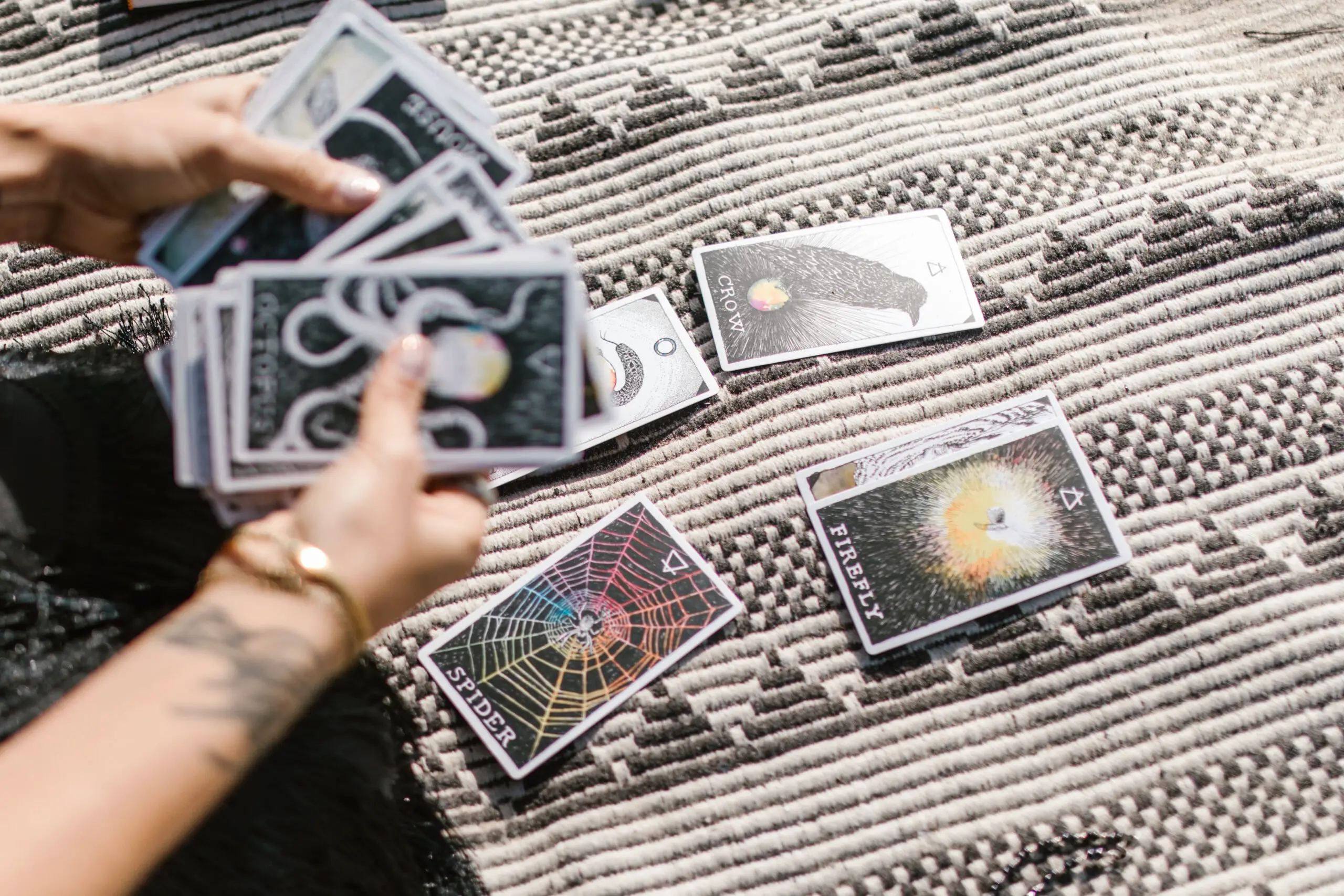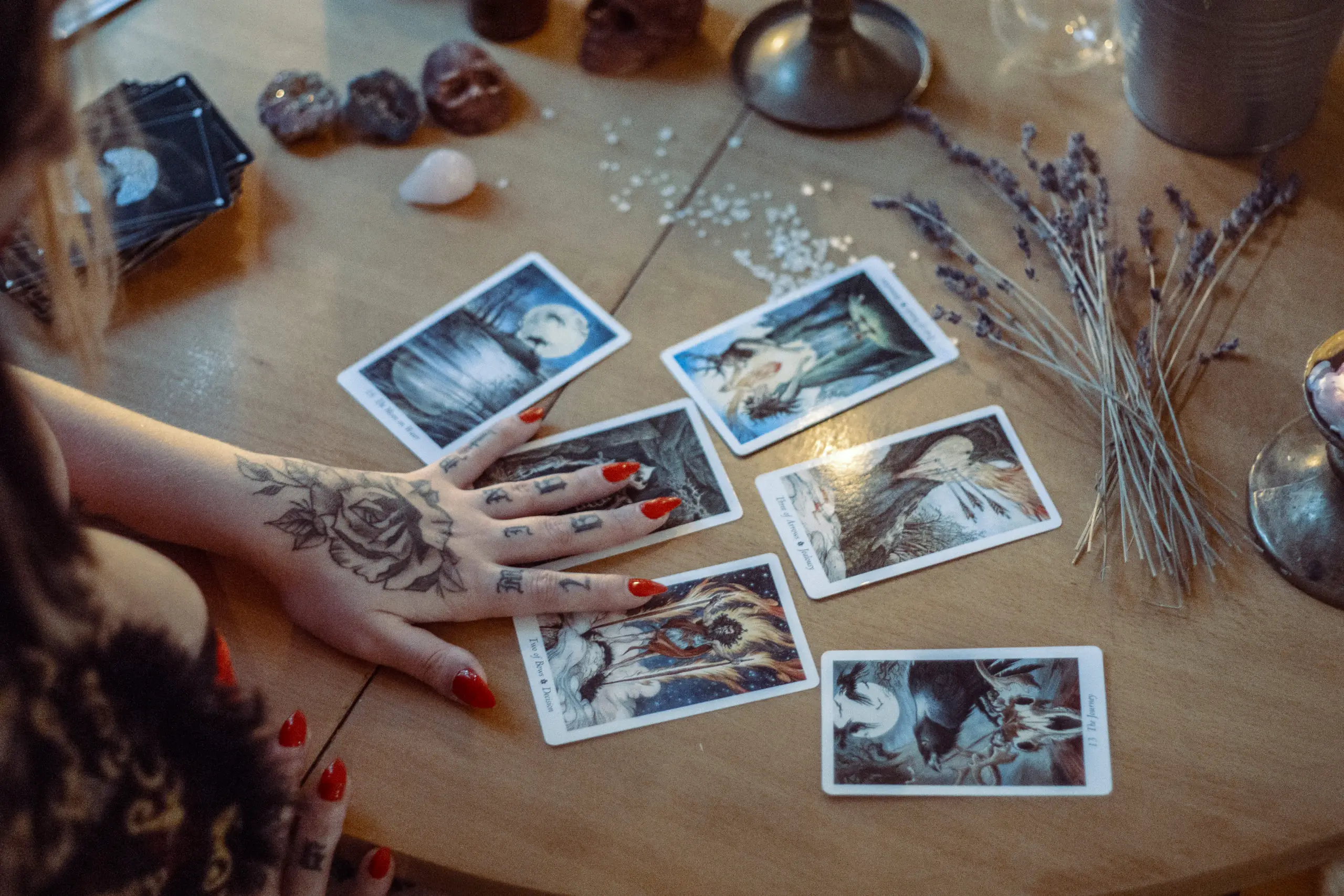Many people are surprised to learn that you can in fact read your own cards. There are a few things to keep in mind, however, if you decide to do this. First, be sure that you understand the meanings of the tarot cards before you begin your reading. Second, it is important to shuffle the deck thoroughly so that you're not accidentally reading old energy. And finally – you just need to be aware that there are some drawbacks to doing your own tarot reading.
In this article, we'll discuss the pros and cons to doing your own tarot readings. Every tarot reader can and should do self reflection, and for tarot beginners, reading your own cards is a great way to get experience. However, if you're looking for more in-depth and personalized readings, you may want to consider seeking the help of a professional.
An introduction to reading tarot cards for yourself
When it comes to reading your own tarot cards, there are a few things to keep in mind. First, be sure that you understand the meanings of the tarot cards before you begin your reading – this will help as you get into it. At the very least, have an understanding of the difference between the Major Arcana and Minor Arcana cards – this will help you get started.
Most folks will use the Rider Waite Deck as their first tarot deck. Although they're old, the meanings for this tarot deck are pretty standardized. Most tarot decks are based, in one way or another, off of the Rider Waite.

Step 1: Intention setting
Before you start, be sure to take a few deep breaths and put your intention out into the universe. Even if you're just doing a five card spread, it's important to be centered.
Step 2: Shuffle and ask
When you're ready, shuffle the cards thoroughly. This is an important part of the reading – it's a way to clear away any old energy and make way for new information. Take your time as you do this – let the cards fall where they may.
As you shuffle, start paying attention to your question. One of the most common mistakes for beginner tarot readings is that you ask the same question over and over again, but maybe your question – and intention – aren't that clear.
Step 3: Draw your cards
Now, lay out the cards in front of you in the spread that you have chosen. Popular spreads include the three card spread, five card spread, and the Celtic Cross. If you're doing multiple readings, you can probably get away with a few different draws before reshuffling.
As you lay out the cards, take note of the images and symbols that you see. What do they remind you of? How do they make you feel?
Step 4: Interpret and reflect with your intuition
After you have drawn your cards, it's time to start reflection. This is where having a clear understanding of tarot card meanings comes in handy. Is that Major Arcana card indicative of a major event in your life? Are all of your Minor Arcana cards coming up wands?
If you've never read tarot, interpretation can be really intimidating. But tarot readers can successfully interpret any tarot card, given time or patience. Just remember to listen to the tarot cards, and if you're having trouble, change to simpler tarot spreads.

Things To Watch Out For With Self Tarot
We all have inner wisdom, and we all have big blocks in our everyday life. Maybe you can't accept criticism well, or maybe you're a really anxious person who automatically thinks that the death card means someone is out to get you. Whatever your limitations are, take a deep breath and try to listen to the cards.
I'm a big fan of traditional meanings of cards. They give us a way to interpret the cards that is not necessarily grounded in our temporary feelings. Intuitive reading is the opposite: staring at the art until what the card represents pops into your head. Whatever you do – be consistent, and keep a tarot journal. It's the best way to harvest insight later about what works for you whenever you're working with your tarot cards.
In conclusion…
A great pro tip is to be patient, and to seek advice from real people (not your tarot cards) whenever you need it. There are plenty of card reading experts out there who would be happy to weigh in on the cards that you've pulled and what they think they mean.
Feeling intimidated? Start with a single card, and build up from there! One card can still tell you a lot about the future and your life.
We hope these tips and tricks have helped you on your beginning tarot reading journey. If you've got questions, we've got answers – so drop them in the comments below!